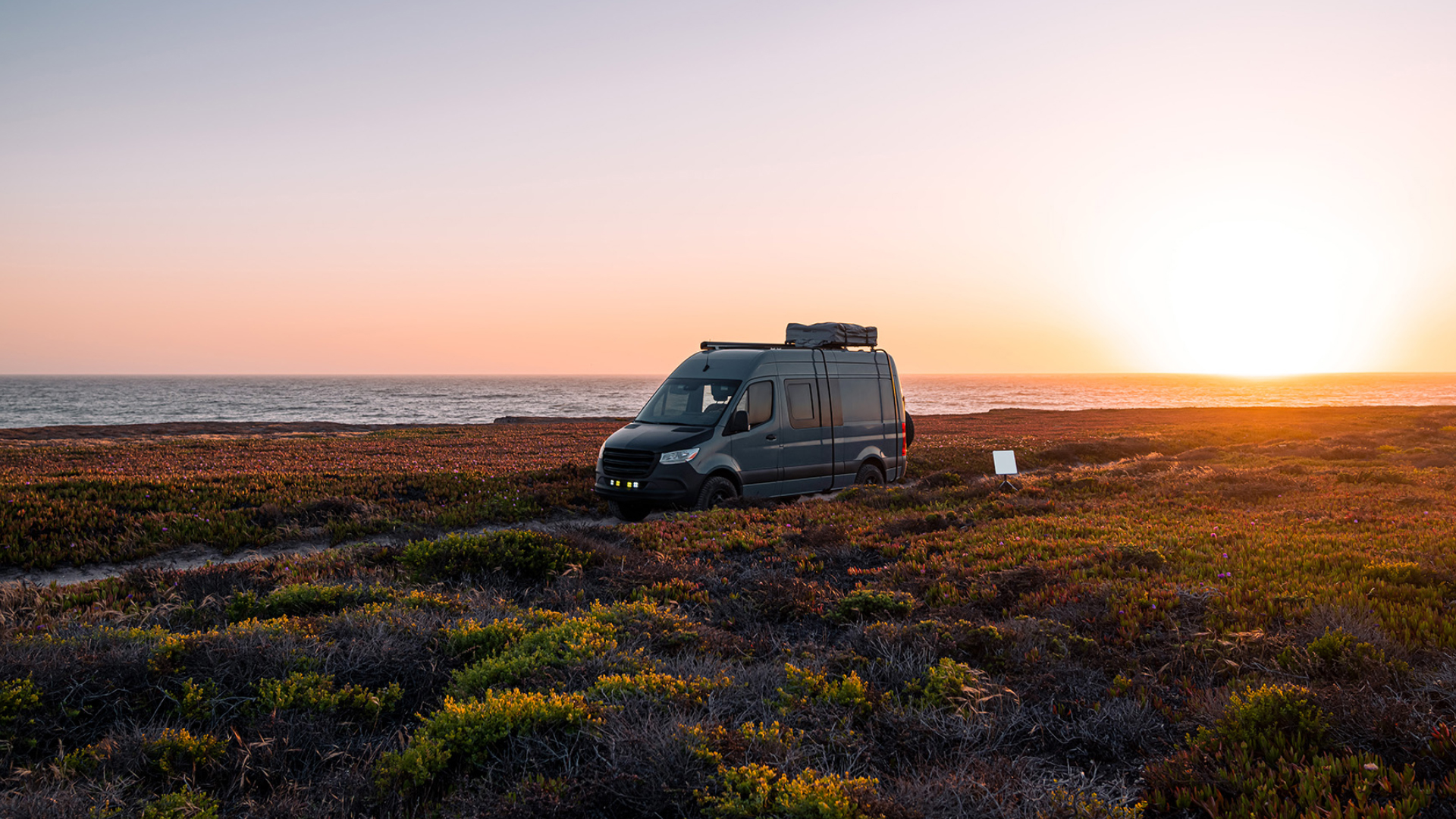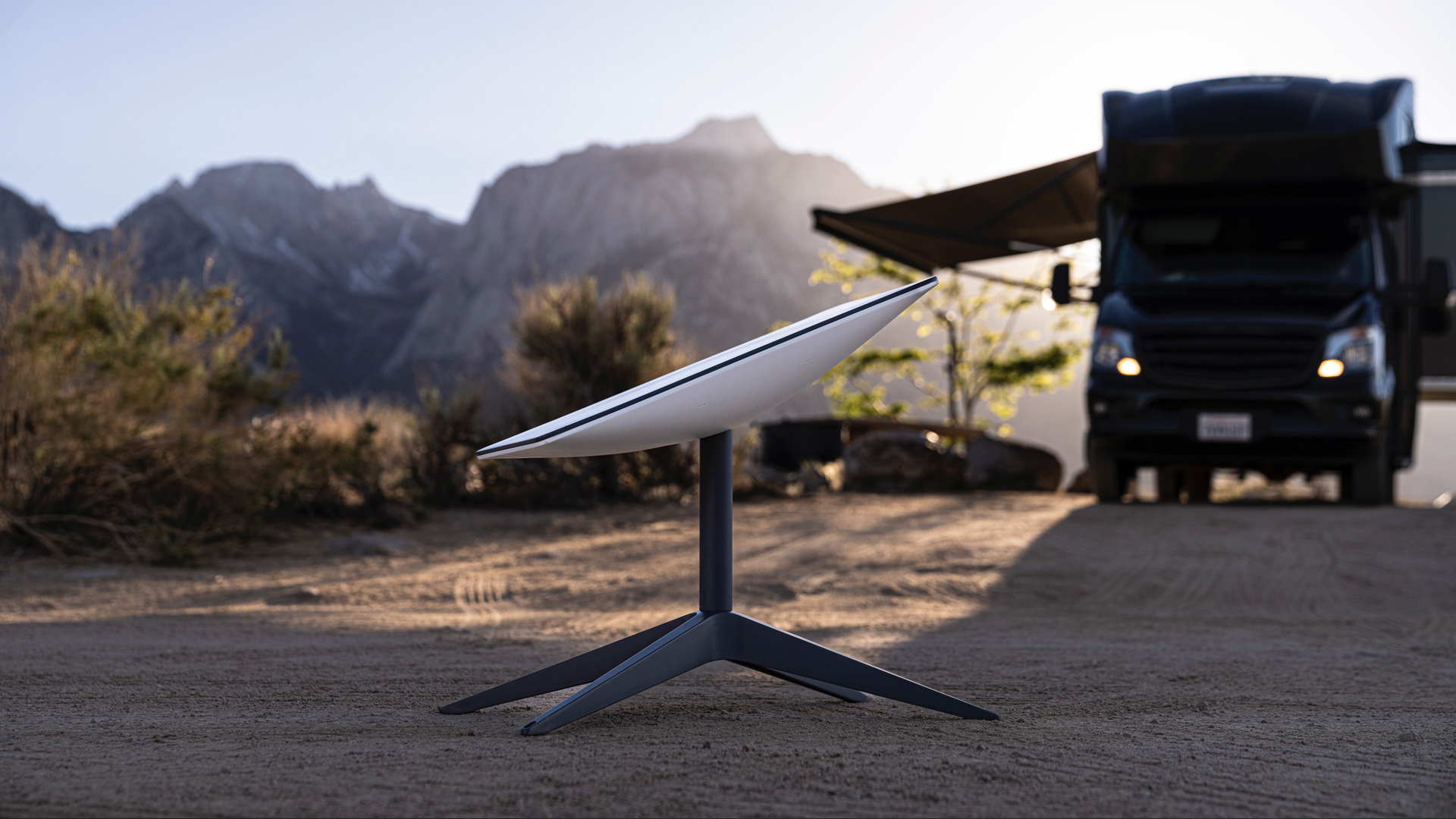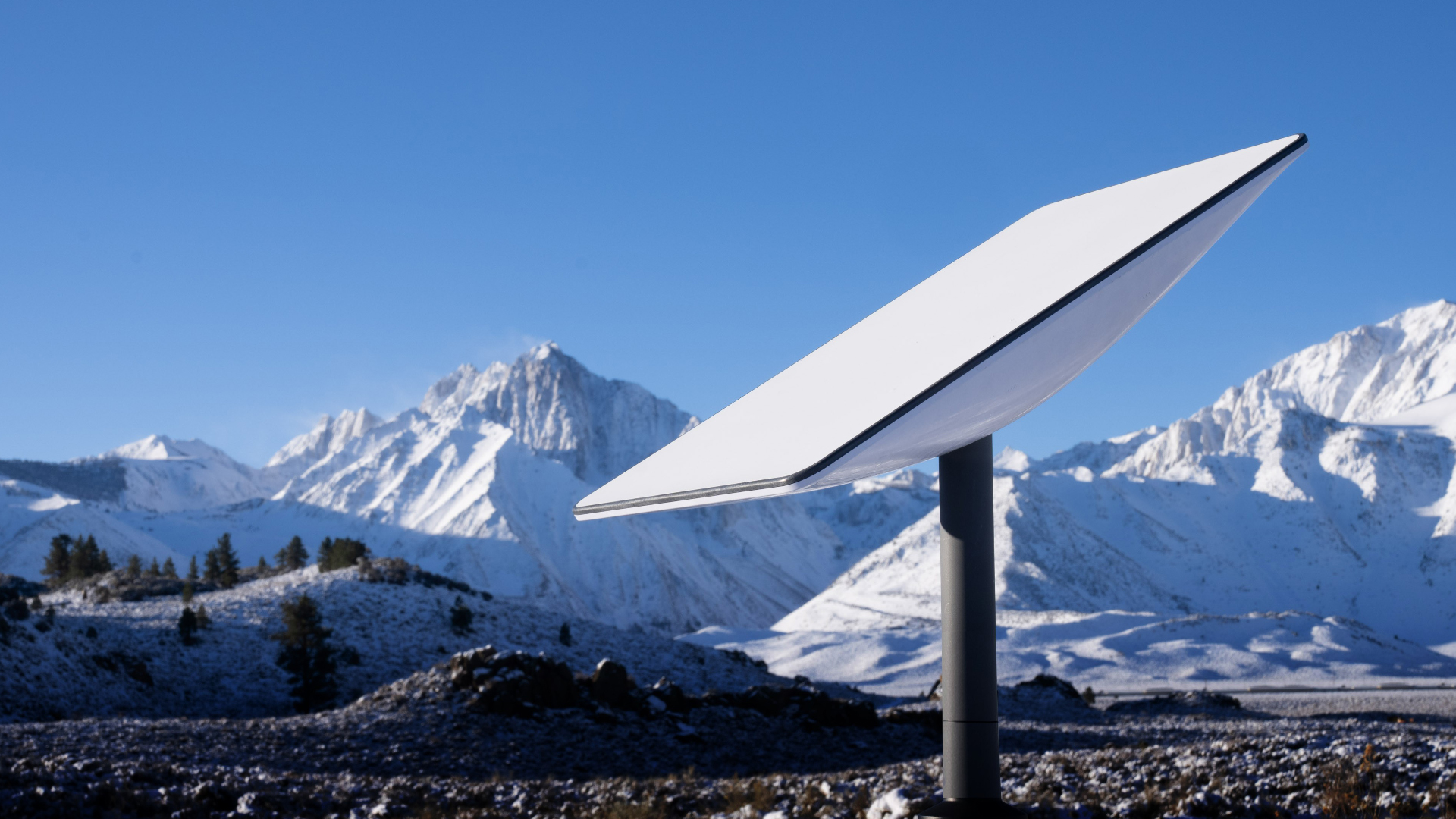Starlink is here and it will consign your patchy internet connection to the history books

When not working on charter flights to the International Space Station, Elon Musk has been slowly but steadily launching thousands of satellites into orbit through his SpaceX programme.
The goal is to propel 12,000 satellites into low Earth orbit (LEO) that will then beam back high-speed, low latency internet to anyone, anywhere on the planet. Although the idea is to deliver a solid broadband connection to locations where it was previously unreliable or not at all possible.
Originally, Starlink enlisted around 10,000 people to enrol in public beta testing, which launched last year, but hardware is now available for anyone to purchase and the number of users across the globe is steadily increasing.
Hardware consists of a high gain antenna that needs to be mounted either in a fixed location, say on the roof of a house, or somewhere where it has a clear view of the sky to connect to satellites. Designed by SpaceX, the kit has been rigorously tested to handle the worst of weather conditions.
In fact, it can handle gusts of wind up to 174 mph (so long as it is installed properly) and heavy rainfall without affecting the service.
Internet in the wilderness
The Starlink Standard Kit contains everything you need to get connected to the internet in minutes, including an accompanying app that uses AR to find the perfect position for your satellite dish.
For this reason, it has caught the attention of those that like to camp or RV out in the wilds, where reliable internet speeds would normally be tricky to achieve with mobile phone signal. All the user needs is a power source, such as a portable power station from a company like EcoFlow, and Starlink will run. It consumes around 1kWh of electricity every day, so those with Solar capabilities will easily be able to run Starlink with minimal impact on power reserves.
Currently, it is available in 54 countries, with more SpaceX satellites being launched on a regular basis. The Middle East, Asia, South America and The Caribbean will all be served by the Starlink programme by the end of 2024, so it won’t be long before even the most remote locations can be served by high-speed internet.

Good enough for gaming
Despite extensive broadband coverage, there are still many parts of the world that suffer from unreliable connection speeds or worse, nothing at all. Even in the UK, there are many rural communities that struggle with solid connection speeds.
Available from John Lewis as either a Standard or High Performance Kit, Starlink has options that cater for various needs and budgets. Billed as a solution for business owners and those who need reliable internet 24/7, the High Performance Kit has better extreme weather performance and helps ensure bandwidth for critical operations 24/7.
But compared to standard broadband speeds, even the Standard Kit has the ability to knock spots off the competition. Speed tests by Ookla suggest Starlink is nearly twice as fast as the median broadband download speed, with averages in excess of 120 Mbps in the UK.
Those same internet speed tests have shown that median latency is very low, too, making Starlink reliable enough for users to participate in online multiplayer games without worry.

A simple set up
Working alongside a dedicated iOS and Android app, Starlink simply needs to be plugged in and pointed at the sky to get connected.
This makes it simple and convenient for those with holiday homes, perhaps in very rural locations, to install Starlink and get online, no matter how remote the location. Similarly, high-speed internet is also available on the water for those who like to stream movies, make video calls and game when on a boat.
Starlink will work when a vessel is in motion and when it is anchored, making it a vital tool to assist in getting highly detailed live weather conditions, plotting routes with increased definition and speed or doing anything online that requires fast and reliable internet

Banish the blackspot
The Standard Kit costs £449.99 for the hardware and has to be paired with a service plan. There are a number available, including a Residential package for those Starlink devices installed in a fixed location, while Roam can be used anywhere.
The High Performance Kit costs £2,399.99, but is aimed more at businesses that will have 20 or more connected users, and its Business Service Plans come in 1TB, 2TB and 6TB offerings. All Business Service Plans come with high-priority data, 24/7 prioritised support and a publicly routable IPv4 address.
Those plumping for the high-performance antenna can also expect to receive much higher internet speeds, with a range of 150Mbps to 500Mbps stated by Starlink (20ms to 40ms latency). Upload speeds are also increased from the 10Mbps to 20Mbps touted by the Standard Kit to 20Mbps to 40Mbps.
Sign up for breaking news, reviews, opinion, top tech deals, and more.